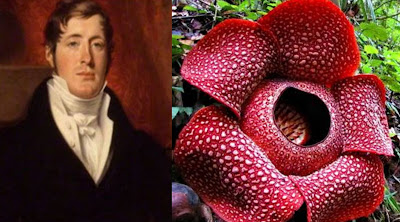Who hasn't heard about the largest flower in the world? It is exotic, unusual, and unique, and people are naturally curious to see it for themselves.
As a result of President Soeharto's Presidential Decree Number 4 of 1993 concerning Animals and National Flowers, Rafflesia arnoldi has been named as Indonesia's national flower.
The Rafflesia flower is a giant padma, one of the uncommon puspae that can grow up to more than one meter in size. This flower also has a unique feature with red leaves petals and a hole in the middle that generates a strong perfume to entice insects into it.
This Rafflesia flower was discovered for the first time in 1818 by the English botanist Dr. Joseph Arnold, who was on an expedition to the forests of Sumatra with the Governor of Bengkulu at the time, Sir Thomas Stamford Raffles, when they discovered a giant red flower with a diameter of 110cm in Pulo Lebar Village, South Bengkulu Regency.
Perhaps the world recognizes a Governor of British origin named Sir Thomas Stamford Raffles and Joseph Arnold in Bengkulu in the years 19 to 20 May 1818 as the first discoverer of the flower. However, the world understands that it was the locals who first knew and knew the Rafflesia flower before Rafles and Arnold announced it to the international world; the locals called this flower "Iben Sekedei," which translates to "Ghost Flower."
Rafflesia Flowers Were Initially Avoided by Locals
At the time, Bengkulu was occupied by the British Colonial led by Raffles as the Governor of Bengkulu. For a number of tribes in Bengkulu, particularly the Rejang Tribe, this giant flower is said to contain mystical elements, and the community prefers to avoid the flower if it is found blooming in the forest. The giant flower is known as "Bungei sekedei" "Iben Sumie" and "Bokor Imbo" because its shape resembles a betel place or bokor, which is thought to be the place where the betels of forest waitresses are like supernatural beings and wild animals such as tigers (the Rejang tribe calls it "imuo" or "Ninik").
The Serawai Tribe is another tribe that lives in the southern region of Prov. Bengkulu. The name "Begian Simpai" or monkey flower refers to the strangeness of the flower, which grows without knowing the seasons and has no roots or leaves. "Both the Rejang and Serawai Tribes believe that this flower can cause reinforcements when approached, so the community prefers to avoid it."
Was Raffles the first to discover Rafflesia flowers?
Louis Auguste Deschamps is a French scientist who has spent 11 years conducting research in Indonesia. Deschamps discovered Rafflesia with the type R Patma in 1797, However, because France was fighting against England at the time, all specimens, illustrations, and records from his 11-year research in Indonesia were confiscated and used as spoils of war by the British in 1803; however, the scientific world only learned in 1954 that it was Deschamps who discovered the type of R. Patma, which was eventually dubbed the Rafflesia Flower.

